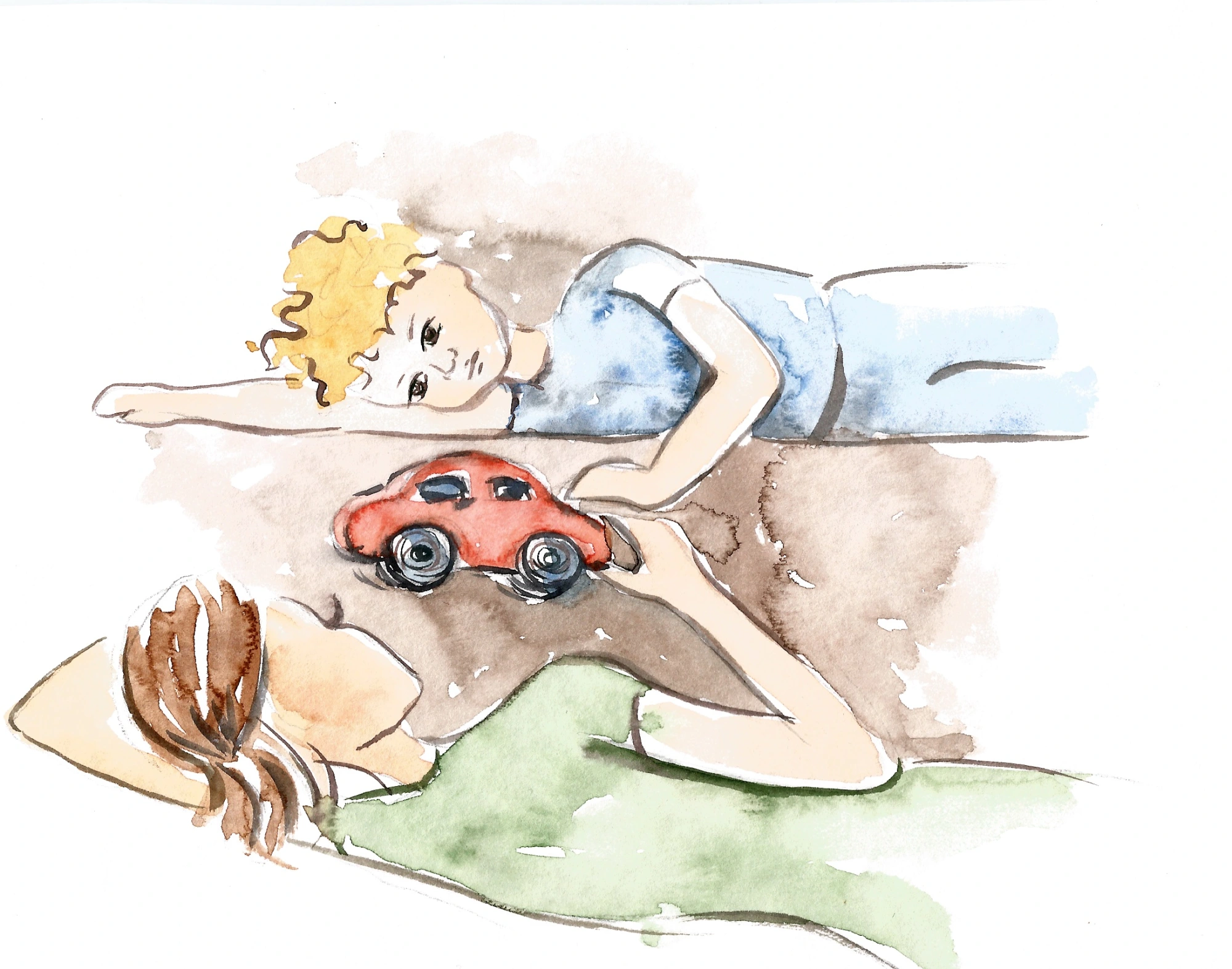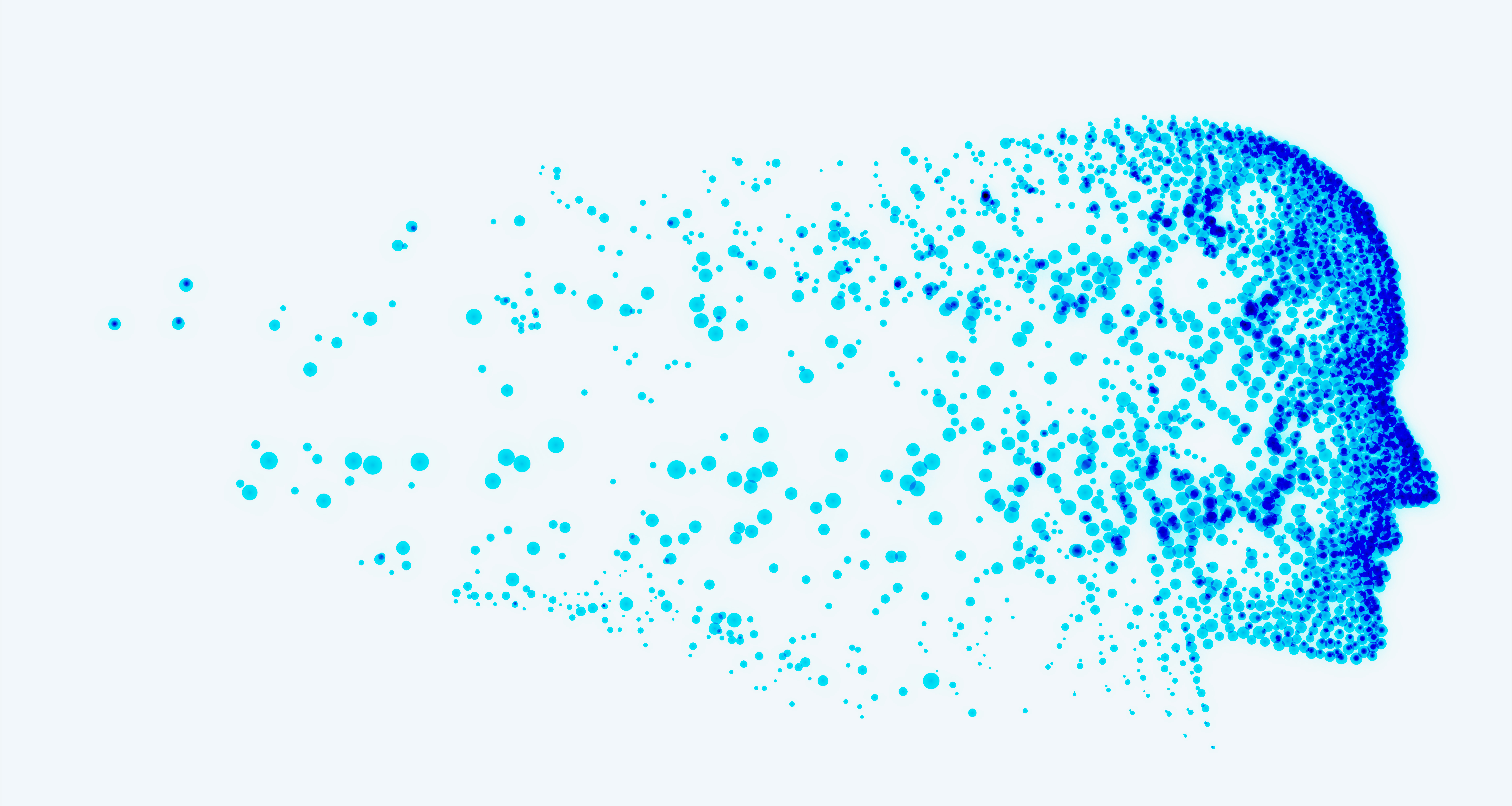Attendance Bouts
Breath-holding spells that cause changes in consciousness. It occurs in about one in 20 children. Girls and boys are equally affected.

Participation attacks are a common situation that makes families very uneasy. In some babies, it may show a resistant course and have negative effects on the quality of life.
Seizures of participation occur as crying, which starts when the child is hurt or not fulfilling his wishes, followed by silent breathing, facial color change, consciousness change, and contraction. While cyanotic (bruising) seizures follow this classical sequence, in pallid (pale) seizures there is a change in consciousness and whitening of the skin followed by a silent cry. In a prevalence study published in our country, the frequency of participation seizure was found to be 3.6%. Again, in the same study, it was determined that seizures are very rare in premature babies, and consanguineous marriage and maternal education level are important risk factors. Family history should be questioned in the seizures. Again, the frequency of epilepsy has increased in these families. Seizures often begin before the age of one, and their frequency peaks at 16-18 months of age. It is not expected to continue beyond the age of six. They are considered as benign seizures, except for an increased tendency to syncope (fainting) in adulthood. Concentration problems in advancing ages have been reported in these children in long-term prognosis studies in the seizure fit. Cardiac rhythm disturbances in pallid involvement seizures may adversely affect the prognosis.
There are studies reporting that piracetam, phenobarbital and levetiracetam may be effective in seizures unresponsive to iron therapy.
Let’s take a look at other non-epileptic conditions that resemble epileptic seizures.
Non-Epileptic Paroxysmal Disorders in Newborns
The most common clinical manifestation of central nervous system damage in the neonatal period is epileptic seizures. Seizures occur in one to five of 1000 newborns. In a study in which children with seizures in the neonatal period were followed up in our clinic, it was found that 27.6% of the patients had cerebral palsy and 50.8% had global developmental delay. Again, in approximately two-thirds of these patients, the electroencephalogram was not guiding. Therefore, neonatal seizures are conditions that are often diagnosed with clinical follow-up and cause physicians to worry about their prognosis.
Non-epileptic paroxysmal disorders, on the other hand, are conditions similar to epileptic seizures in which consciousness can sometimes be affected but have no electrographic counterpart. These paroxysms usually occur in certain age groups, do not affect the neurodevelopment of the child and tend to regress in a certain period of time. Electroencephalogram has a limited place in the differentiation of non-epileptic paroxysms from epileptic seizures in the neonatal period. Since these events are usually noticed in neonatal wards, patients who are promptly started on antiepileptic treatments can often be challenging for pediatric neurologists. The main diagnostic method in non-epileptic paroxysmal disorders is to question the event well.
What is the age of onset of paroxysm?
Is paroxyma stereotypical, that is, attacks occur similarly and in a similar time frame?
Is there a warning that can trigger paroxysm?
Does the patient show a postural, respiratory change at the time of the event? Is it accompanied by bruising or paleness?
Can you calm the situation? Can you distract the baby during the event?
How does the child behave immediately after the attack?
What is the duration and frequency of attacks?
Is there anyone in the family with a history of similar complaints?
Can you imitate the event?
Another diagnostic method as important as questioning the event is video recordings. Thanks to advancing technology, families or newborn service workers can easily record attacks. Here, it is important to try to make a video recording of each repetitive attack. Thus, a more definite opinion can be reached about the semiology, variety and frequency of attacks. The characteristics of non-epileptic paroxysms should be kept in mind when evaluating the information obtained after the attacks and video recording.
There is usually a warning that triggers paroxysms.
Paroxysms can be alleviated or terminated by positioning the baby or external stimuli.
The occurrence of paroxysms is often limited to the wakefulness, sleep transition, or sleep phase.
The baby recovers quickly after the event, the events in sleep disappear when awakened.
The onset, course, and end of paroxysms are similar to each other.
Paroxysms are not accompanied by ictal EEG findings.
The frequency and severity of attacks do not change with antiepileptic treatment, sometimes the frequency of attacks increases.
In this section, paroxysmal events that can be seen in the neonatal period will be discussed. Frequent cases will be followed in order from less frequent cases.
Jitterness, Shaky baby
Sleep Myoclonia
Attendance Bouts
hyperekplesia
Paroxysmal Extreme Pain Syndrome
Alternan Hemiplegia
Newborn Tremor “Jitteriness”
It is recurrent tremor attacks in the newborn period. It occurs in 20% of newborns. lower horizontal Treatment should be directed towards the cause. Tremor can occur in 3/4 of all newborns in the first 72 hours of life. This condition is called physiological tremor. Advanced triggers are not necessary in infants with no risk factors and normal neurological evaluation. In these infants, the tremor disappears with sucking, sleep, or immobilization of the extremity. Physiological tremor is always high frequency and low amplitude.
Clinical Tips
Central pathologies should be considered in low-frequency tremors. Tremors are triggered by stimulation and disappear with passive flexion of the extremity. The tremor is not accompanied by deviation of the eyes. Tremors in a calm, suckling baby are pathological. Hypoglycemia, hypocalcemia, and hypomagnesemia should be investigated. Drug addiction in the mother should be questioned. Treatment should be aimed at correcting the underlying cause. It has been reported that neonatal tremor can extend into early infancy. Families of these babies should be trained in calming maneuvers.
Benign Sleep Myoclonus of the Newborn
They are rhythmic repetitive jumps that occur during sleep in newborns. Its frequency is 1-3/1000. More common in boys ?/ The frequency of girls and boys is equal. Only monitoring is recommended. Since epileptic seizures are the most common symptom of neurological involvement in the neonatal period, it is a concern for families and physicians. When babies are referred to pediatric neurology, it is often seen that antiepileptic treatment has been started by the first center. Sleep myoclonia occurs in the first 2 weeks of life, with an average age of onset 5-7 days. Symptoms appear only during sleep and disappear when the baby is awakened. Serotonergic imbalance, delayed brainstem maturation, or the presence of a cervical spinal generator have been suggested in the pathogenesis.
Clinical Tips
Myoclonias occur only during sleep and in the distal extremities. It can be bilateral, it can show variation. It does not involve facial muscles. It usually takes less than 10 minutes. Myoclonies disappear within 3 months in about half of the patients, and within 6 months in the majority of them. A similar picture has been reported in infants of drug-addicted mothers. The severity of myoclonias increases with audible or tactile stimulation. It ends with the awakening of the baby. The diagnosis of epileptic seizures is often considered in centers that do not have sufficient experience in evaluating newborn EEG. Phenobarbital may increase the frequency of myoclonus and confuse the clinical picture. In sleep myoclonus, which is a benign condition, only follow-up is sufficient. Migraine and epilepsy development was rarely reported in long-term follow-up studies. However, the frequency of these cases is close to the frequency of migraine and epilepsy in the community.
Participation Watch
Seizures of participation occur as crying followed by silent expiration, facial discoloration, altered consciousness, and tonic contraction. While cyanotic fit episodes follow this classical sequence, pallid fit episodes include a silent crying followed by a change in consciousness and skin whitening. In a prevalence study published in our country, the frequency was found to be 3.6%. Again, in the same study, it was determined that seizures are very rare in premature babies, and consanguineous marriage and maternal education level are important risk factors. Family history should be questioned in the seizures. Again, the frequency of epilepsy has increased in these families. Addiction seizures often begin before the age of one, rarely occurring in the neonatal period. It is not expected to continue beyond the age of six. They are considered as benign seizures, except for increased syncope tendency in adulthood. In long-term prognosis studies, concentration problems have been reported in these children at later ages. Cardiac rhythm disturbances in pallid involvement seizures may adversely affect the prognosis.
Clinical Tips
Cardiological evaluation is required in pallid involvement seizures, while the place of cardiological evaluation in cyanotic seizures is controversial. The most important aid in diagnosis is a good anamnesis. The developmental stages of the seizure fit are often well described by families. The fitter seizure may end with a reflex anoxic seizure. This situation, in which children assume an opistotonus posture, is as frightening for physicians as it is for families. Hyperekplesia should be considered in the differential diagnosis. Treatment
Iron replacement leads to a significant reduction in seizures in approximately half of infants. It has been reported that iron replacement is effective in cases where iron deficiency is not detected recently. Our clinical experience is that iron therapy targeting higher ferritin values is quite effective in these patients. In newborns, phenobarbital is the first choice for treatment. hyperekplexia
It is an exaggerated startle response to stimuli.
It is caused by genetic mutations related to the glycine mechanism or receptor.
The first choice for treatment is clonazepam.
Phenomenon*
It was learned that after an uneventful pregnancy, the baby girl, who was born on time with a normal spontaneous delivery and was reported to have no problems in the first hours, started to have seizures within the first day. par from his story When her contractions did not stop with enteral phenobarbital and phenytoin, calcium, magnesium and vitamin B6 were given, but clonazepam was added while she was taking phenobarbital and phenytoin, to which no response was obtained, and clonazepam was not continued after her general condition deteriorated; In the meantime, it was learned that no pathological findings were found in the biochemical, blood gas, metabolic (ammonia, lactate, amino acid in the blood), cerebrospinal fluid, and cranial magnetic resonance imaging examinations, and he was sent to our hospital at the age of twenty-one days, on the grounds that he had refractory convulsions that did not respond to treatment. His physical examination did not reveal any features other than hyperirritability, live Moro reflex, myoclonus with sound and tactile stimuli, and generalized tonic contractions that often followed. No epileptiform activity was detected in the patient’s interictal and ictal EEG recordings.
Hyperekplexia is a picture characterized by an exaggerated startle response to tactile, auditory and visual stimuli. Symptoms often appear in the newborn period. The first symptom in newborns is a sudden onset of rigidity throughout the body. Apnea and sudden death may develop during this attack. In the later stages of life, startles are in the form of stiffness and falling after the startle after the patient walks. The first family of hyperekplesia was described from the Netherlands in the 60s. Clinical features of this family,
Autosomal dominant inheritance
Exaggerated startle response to stimuli that do not cause a response in healthy individuals
The severity of the startle increases with fatigue, stress and tension.
Maintaining consciousness during startle
Generalized convulsions in newborns
lag behind peers in motor skills
Change in disease severity with age
Jumps in going to sleep
exaggerated brainstem reflexes
It has been described as an increased frequency of inguinal and umbilical hernias.
After the first described family, sporadic cases were also reported and different genes causing the disease were identified. The glycine receptor consists of 5 transmembrane proteins and is localized to the post-synaptic membrane. When activated, it causes hyperpolarization with chloride current, causing synaptic inhibition in the spinal cord and brain stem. The GLRA1 gene encodes the α1 subunit of the glycine receptor and its mutation is responsible for the classical familial form (autosomal dominant or recessive). Mutations in this gene are found in 80% of familial cases. The second most common gene mutation is SLC6A5, which encodes the presynaptic glycine transporter. Other genes reported in sporadic cases are; GLRB encoding the β subunit are Gephrin (GPHN gene) and collibistin (ARHGEF9 gene), which act as membrane anchors for its receptor.
Clinical Tips
Attacks may cause apnea and cardiac rhythm disturbances in the neonatal period. There are cases associated with sudden infant death syndrome. In the neonatal period, patients may experience feeding problems.
Normal cognitive development is expected in these patients.
A rescue maneuver has been described in cases of rigidity in newborns. Folding the baby’s head and legs towards its body often ensures the end of the attack.
By tapping the nose or forehead lightly during the examination, the baby assumes a tonic posture following startle.
Clonazepam, which acts on the inhibitory neurotransmitter GABA, is the first choice in treatment. Clonazepam reduces the number and severity of life-threatening startle attacks in newborns. It has been reported in case reports that piracetam, carbamazepine, phenobarbital and valproic acid may be useful in resistant cases. Vigevano maneuver, forceful flexion of the baby during an attack, may be effective. Physical and psychological exercises to prevent falls with stimuli are helpful in advancing ages.
*Facts and figures quoted with permission of the author. Kutluhan Yılmaz, Burak Tatlı, Yasemin Buran et al. Hyperekplexia in the differential diagnosis of convulsions: A report of two cases. Journal of Child Health and Diseases 2005; 48: 61-64
Paroxysmal extreme pain disorder
It occurs with attacks of autonomic phenomena and tonic contraction in the neonatal period. It is painful channelopathy, the SCN9A gene is held responsible. The first choice in treatment is carbamazepine. Attacks usually begin in the first days of life. In neonatal resuscitation, a case was reported who had the first attack with a rash that spread rapidly from the hip to the legs after tactile stimulation to the gluteal region. Attacks typically begin with skin rash and tonic contraction, followed by bronchospasm and bradycardia. In advancing age, patients describe short-term extreme rectal or ocular pain. The attack can be triggered by defecation, applying a rectal thermometer, cold wind and eating food. While the frequency of attacks decreases towards adolescence, the probability of the attacks ending with syncope increases. Paroxysmal extreme pain syndrome is autosomal dominant, and sodium channel gene SCN9A mutations play a role in its etiology. Clinical differences between affected family members are common. It can be difficult to differentiate from hyperekplesia. Harlequin discoloration, which affects one side of the body, is an important factor at the onset of attacks. clinical clue. Neurodevelopmental effects are not expected in the cases. It has been reported that the frequency of attacks can be reduced with carbamazepine treatment.
Alternan Hemiplegia
Recurrent attacks with loss of tone and lack of movement in one half of the body. It is characterized by paroxysmal eye movements in the neonatal period. The reported frequency is 1/1,000,000, but it is expected to increase in the coming years with the possibility of genetic diagnosis and increasing awareness. ATP1A3 mutation Flunarizine is the first choice for treatment. Alternan hemiplegia is a condition characterized by progressive motor and cognitive impairment and presents its first symptoms in the newborn and early infancy. Plegic attacks begin before 18 months of age, may be limited to one half of the body or spread to the other half. While attacks are not accompanied by a change in consciousness, dystonia or athetosis can be seen with or without attacks. While the mean age of onset of plegic attacks is six months, ocular movement disorders and dystonia are reported in approximately 80% of patients in the first three months. In the literature, monozygotic twins who were diagnosed with hot water-related epilepsy when they were 3 days old but were found to have alternating hemiplegia at 4 years of age due to typical attacks have been reported.
Diagnostic Criteria
Symptoms begin before 18 months of age Recurrent plegic attacks involving different halves of the body Bilateral plegic or tetraplegic attacks due to the spread of the hemiplegic attack or since the onset of the attack Disappearance of symptoms with sleep Presence of dystonia, ocular movement disorders and autonomic disorders associated with or occurring independently of the attack Neurodevelopmental retardation or persistent neurological problems. Stages of the Disease
Stage 1
Period between 0-1 years Ocular movement disorder is evident in the first months. Autonomic changes and dystonic attacks may be seen.
Stage 2
period between 1-5 years It is the period when hemiplegic attacks begin or intensify. Developmental retardation goes away with loss of acquired functions. Ataxia and deterioration in fine motor skills are observed. After the age of 2, epileptic seizures occur in about half of the patients.
Stage 3
school age The frequency of hemiplegic episodes decreases, patients may remain diplegic, hemiplegic or tetraplegic Learning and speech problems become evident. Clinical Tips
Episodic monocular nystagmus should strongly suggest alternan hemiplegia. Epileptic seizures occur in the advanced stage of the disease. Prediagnosis of Todd’s palsy is the most common mistake. Attacks can be prolonged. Attacks lasting for days have been reported. In prolonged attacks, it should be expected that the symptoms will reappear after sleep. Deep tendon reflexes are often absent on the hemiplegic side. Headache may accompany in about half of hemiplegic episodes. Attacks can be triggered by excitement, stress, trauma, bright light, hot bath, cold and heat. The severity of hemiplegia can vary between attacks and on different parts of the body. Imaging methods and routine laboratory analysis are not directive. Diagnostic Approach
Detection of the ATP1A3 mutation in 3/4 of the patients will lead to an expansion in the number of cases and disease spectrum defined by the increasing clinical use of this test. The presence of CACNA1A, ATP1A2 and SLC1A3 mutations should be evaluated in favor of familial hemiplegic migraine.
Prognostic Markers
Sporadic cases are more serious than familial cases. Presence of neonatal findings, early-onset and frequent hemiplegic episodes, and status epilepticus are poor prognostic markers. Treatment
Flunarizine is the most frequently reported drug to reduce the frequency and severity of attacks. It is known that this effect may not be permanent and the debate on its effect on prognosis continues. Amantadine and acetazolamide are other drugs with reported prophylactic efficacy. Sleep-inducing agents chloral hydrate, clonazepam or diazepam are recommended for the treatment of acute attacks. It has been reported that the use of topiramate in the treatment of epileptic seizures may also modify the disease.








